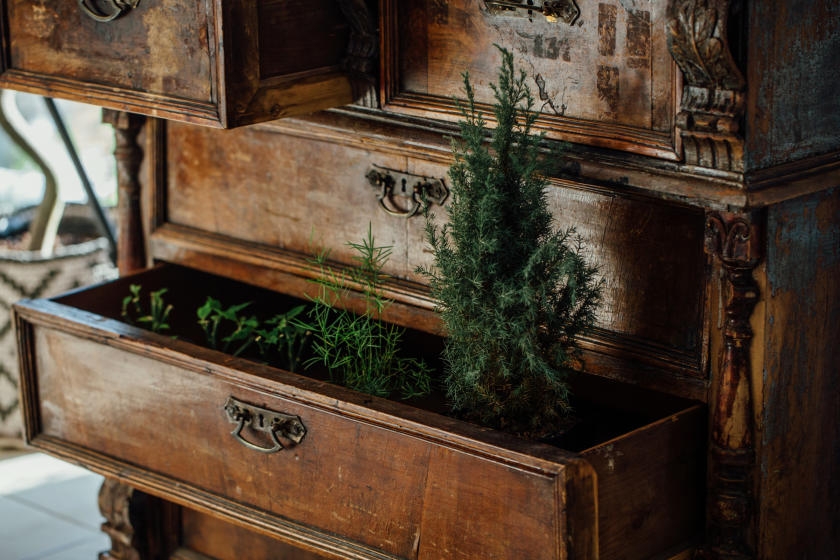As with the exterior of your home, plants and flowers can enhance the interior environment of your living space. Anywhere you can keep the temperature above 65 degrees fahrenheit and provide ambient light is ideal for growing indoor plants that will add natural décor indoors.
Build an Armoire Garden
Using fans and artificial light, you can create a beautiful indoor plant environment in a piece of furniture, like an unused armoire.
Step 1: Select Your Plants
The plants you choose for your armoire garden can change the feel of an entire room. Plants with dark or light green, gray, or variegated leaves tend to add a relaxed ambience to a room. Bold colors, such as red, yellow and orange provide dramatic effects and statements.
Step 2: Prepare Your Space
To protect the armoire against humidity, paint the interior walls with a light-reflecting, waterproof paint. If the doors have glass panels, they can be shut to increase humidity. Install a florescent lamp and small fan above to help air circulate and hinder mold and fungus.
Step 3: Catch Water
Place a 2” deep sheet-metal pan at the bottom of the armoire and interior shelves to catch any water that drips from flower pots. Fill the pans with stones to help keep the pots above water level.
Step 4: Add Plants
Based on height, color and texture, arrange potted plants in the front, middle and back of the armoire. You may want to consider rotating your plants depending on their bloom cycles. Flowering plants, such as orchids, can be placed in front of the armoire when they are in bloom and then moved to the back once their petals have fallen.
Create a Tabletop Fountain
Indoor fountains add a sense of peace and tranquility to your home. If you’re creating an indoor garden, a tabletop fountain makes a great centerpiece and will encourage growth in your plants.
Step 1: Outfit a Water Pump
Find a small, submersible pump and fit it with 8” of plastic tubing to elevate the water. The tubing should be 5/8” in outer diameter. Know what kind of container you’ll be using ahead of time so you can adjust the tube length to fit your design. Fit 1-2” of tubing over the pump spout.
Step 2: Find a Suitable Container
Waterproof bowls, at least 2” deep, make suitable fountains. You can find plastic or ceramic containers at your local True Value store.
Step 3: Place the Pump
Attach the pump’s suction cup feet and place it at the bottom of your container. Add enough tap water to cover the intake valve, and plug it into a grounded electrical outlet. Adjust the pump’s water flow as needed.
Safety Alert!
Don’t start the pump until it is fully submerged in water. Use only grounded electrical outlets, and unplug the pump every time you need to adjust the water flow. Dry your hands completely before plugging the cord back in.
Step 4: Create Your Fountain
Fill the base of the pump with large, flat stones. Place smaller, more colorful ones toward the top. Conceal the pump using larger rocks. Stack smaller rocks on top near the pump spout. Surround your garden with potted plants and add accents such as candles, flowers, shells, and crystals as desired.
Helpful Tip
To protect tabletop surfaces, place your fountain on a Masonite-backed cork mat.
Great work! Consider your rooms enhanced with your new indoor landscaping.
Armoire Garden: Project Shopping List
Here’s what you’ll need to complete this project successfully.
- Waterproof paint
- 2″ deep sheet-metal pan
- Flower pots
- Stones
- Fluorescent lamp
- Small fan
- Potted plants
- Water
Tabletop Fountain: Project Shopping List
Here’s what you’ll need to complete this project successfully.
- Small, submersible water pump
- 8″ plastic tubing (5/8″ outer diameter)
- Water
- Utility knife
- Waterproof plastic or ceramic bowl (at least 2″ deep)
- Flat stones and rocks of various sizes
- Potted plants
- Decorative accents: candles, flowers, shells, or crystals (optional)
- Masonite-backed cork mat (optional)
- Waterproof paint










